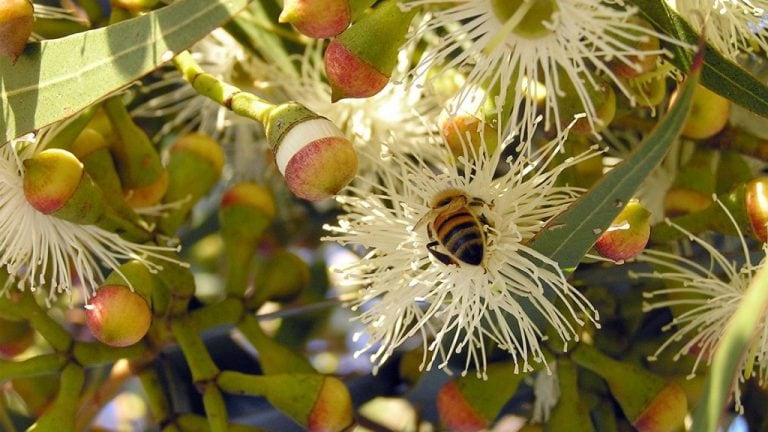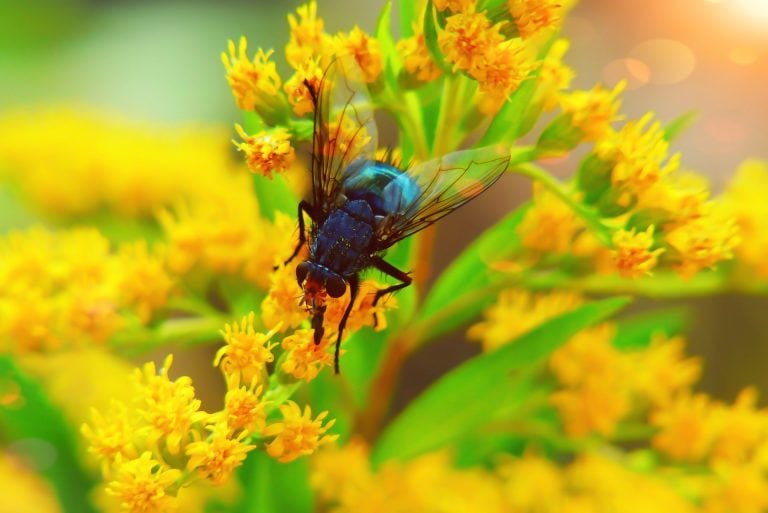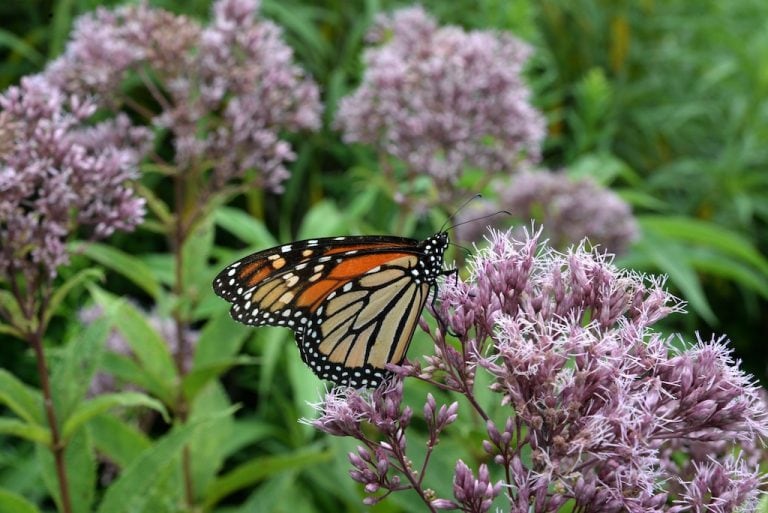Planting a Pollinator Friendly Garden
Learn about pollination partnerships between plants and insects and how plants attract bees.

Bees collecting nectar and pollen from Spotted Gum flowers.
Pollination partnerships between plants and insects
If you spend some quiet time in the outdoors getting up close to flowers, the world of insect pollination unfolds. Plants have preferred pollinating partners and understanding these relationships is a great help when planning a bee-friendly garden.
It turns out nature has co-evolved over around 100 million years in partnerships; various insect types with various plants and these patterns are quite predictable.
Flowers have evolved with characteristics that are attractive to their preferred insects, to the point where particular plants partner with particular insects.
How plants attract bees?
While honeybees (Apis mellifera) might be the best known of the bee species there are thousands of different bees. In Australia alone there are over 2000 native bee species and most of them are solitary bees. Some live in trees, others in the ground and some in colonies.
1. The colour of the flower
Regardless of the bee species, there are common floral traits that attract most bees. White, yellow, purple or blue are colours that attract bees. Flowers that bees love exude a pleasant but mild aroma. It turns out that all bees search for flowers that produce nectar, pollen or both.
2. Ultraviolet (UV) Marks
Bees and other pollinating insects see things that we don’t see. They can perceive ultraviolet (UV) light. If you look closely at some flowers they have dots and spots that absorb UV light and act like runway lights to guide the insect into where the plant has positioned the nectar.
Some insects can only navigate to flowers with UV markers. However for bees: white, yellow, purple or blue flowers are signal enough that pollen and nectar exist.
Avocado Pollination
Avocado trees in Australia are predominantly pollinated by honeybees. The avocado tree produces millions of flowers to maximise their ability to attract pollinators and the result is the deliciously smooth and creamy fruit that is loved by many.
Occasionally bees collect enough nectar during avocado pollination to make avocado honey. We are delighted to share our first release of a single varietal Avocado Honey. It is warm and rich in flavour and reminiscent of dried fruits. It has a medium sweetness with no aftertaste and is milder than its colour suggests. Shop here…
Other species that pollinate plants
1. Flies
Flies are pollinators. They are often seen on the same flowers as bees as they, too, are attracted to both pollen and nectar. Hoverflies can be particularly mesmerizing as they dart about the flowers alongside their fatter, hairier bee colleagues.
2. Beetles
Some flowers have evolved to attract beetles as their preferred species. These “beetle buddy” plants tend to have flowers that are flattened like dinner plates. They are often green or murky white but never brightly coloured. If they have an odour that is fruity with hints of decay, chances are that beatles love them.
3. Moths
Moths can also be excellent pollinators but we often don’t see them on flowers. Their pollination magic happens at night. Moths are usually nocturnal and have co-evolved with plants that flower during the night. Typically moths go for white, red, purple or pink flowers.
4. Butterflies
The showiest of all the pollinators is the butterfly. They are lured by colourful flowers with beautiful contrasting nectar guides. Butterflies are not interested in pollen and they love showy red or purple flowers.
5. Bats
Bats are very clever pollinators. The flowers they search for come out at night and maybe green, purple or white and loaded with pollen and nectar. Their flowers are positioned outside the foliage zone to make landing for the bats easier in the dark.
6. Birds
Birds such as honeyeaters are specifically attracted to various plants whose beaks reach deep down in the flower to the nectar reserves to collect their meal. They too are efficient pollinators. Large red, orange and white flowers bloom on plants with strong stems to hold the weight of the birds.

Flies pollinate flowers

Butterflies - the showiest pollinators!
Growing an array of different flowering plants with a full spectrum of flower colours is essential for providing a rich diet for all species that live in the garden.
Plants and pollinators coexist beautifully in nature. Planting a bee-friendly garden that supports pollinators is joyful and very rewarding. Not only will your garden be full of colour, but it will also be full of bees, birds and butterflies.
This summary was written by Jodie Goldsworthy from the original article:
“The Vocabulary of Pollination” by Rusty Burlew
American Bee Journal – Vol 160. No 6 – June 2020

